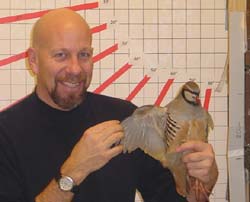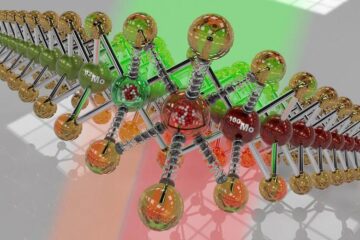Latest News

Scientists target microorganisms to break down toxic pesticide
Using biological means to detoxify large, contaminated sites is receiving high praise as an alternative to incineration or landfill methods
A pesticide used extensively all over the world is receiving attention these days more for methods being used to clean it up than for its use as chemical to control insects and mites.
Endosulfan, classified as an organochlorine (the same family as DDT), is registered for use as a pesticide on 60 U.S. crops. Its residues have been found i

Umbilical cord matrix, a rich new stem cell source, study shows
The cushioning material or matrix within the umbilical cord known as Wharton’s jelly is a rich and readily available source of primitive stem cells, according to findings by a research team at Kansas State University.
Animal and human umbilical cord matrix cells exhibit the tell-tale characteristics of all stem cells, the capacity to self-renew and to differentiate into multiple cell types.
Researchers Kathy Mitchell, Deryl Troyer, and Mark Weiss of the College of Veterinary

New Study Suggests Missing Link that Explains How Dinosaurs Learned to Fly
Two-legged dinosaurs may have used their forelimbs as wing-like structures to propel themselves rapidly up steep inclines long before they took to the skies, reports a University of Montana researcher in the January 17 issue of the journal Science. The new theory adds a middle step that may link two current and opposing explanations for how reptiles evolved into flying birds.
According to Kenneth Dial, author of the report, the transition from ground travel to flight may have required a “

Researchers decipher cause of parasite’s worldwide spread
Research at Washington University School of Medicine in St. Louis reveals that a unique combination of genes inherited less than 10,000 years ago allows the parasite responsible for toxoplasmosis to infect virtually all warm-blooded animals.
Parasite life cycles are complex and thought to develop over long periods with their hosts. This study reveals that parasites sometimes adapt rapidly to new hosts, indicating that host-parasite relationships may not always represent stable, long-term as

Magnetic ’slinky effect’ may power aurora
The spectacular aurora borealis displays that light up the northern nights could be powered by a gigantic “slinky” effect in Earth’s magnetic field lines, according to research performed at the University of Minnesota. Earth’s magnetic field resemble a slinky in that when “wiggled,” it undulates in waves that travel down the field lines at speeds up to 25 million miles per hour. These waves can pass energy to electrons, accelerating them along the magnetic field lines toward Earth. When the

Scientists explain formation of stone circles and other strange patterns in northern regions
Mysterious patterns arise through simple feedback mechanisms and self-organization
Perfect circles of stones cover the ground in parts of Alaska and the Norwegian islands of Spitsbergen. Elsewhere in the far north, stones form other striking patterns on the ground: polygons, stripes, islands, and labyrinths. No, pranksters are not at work in these remote areas, nor are aliens, elves, or any other outside forces moving the stones around. According to scientists who have studied the phe











